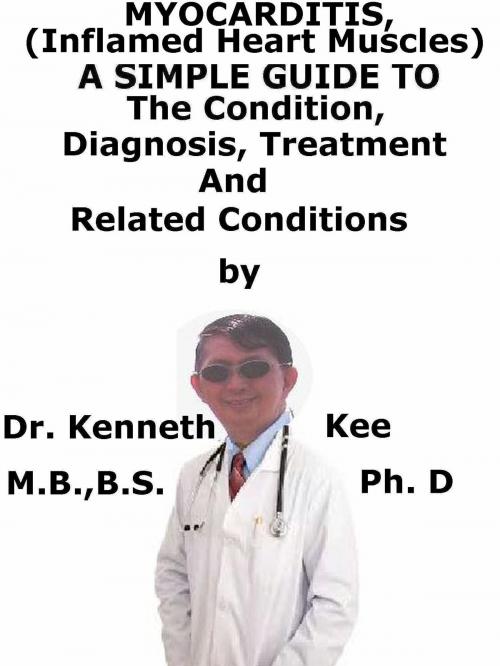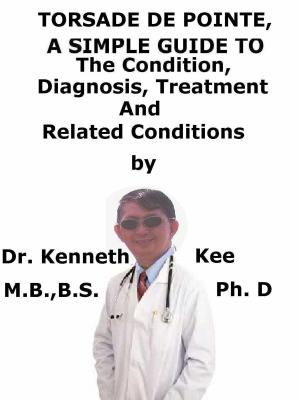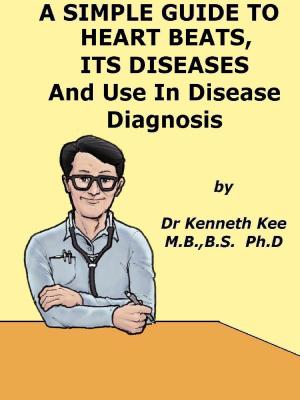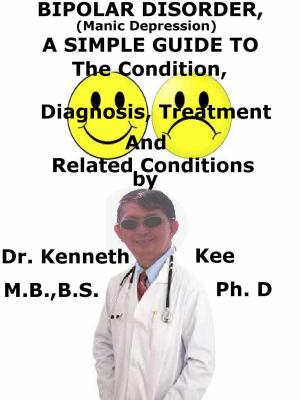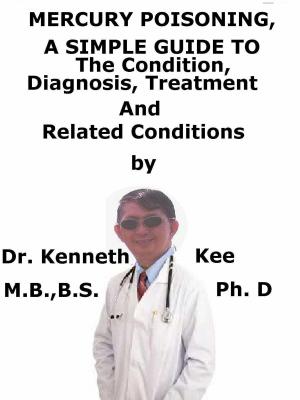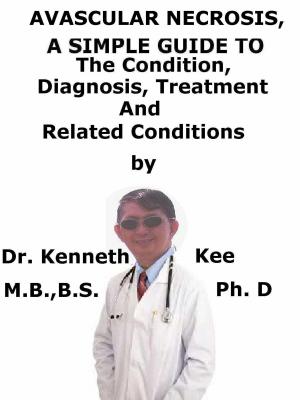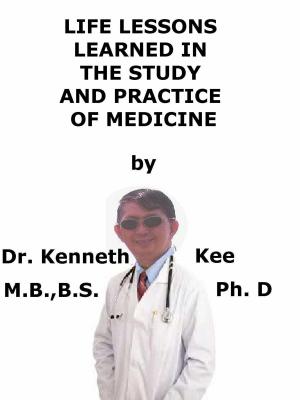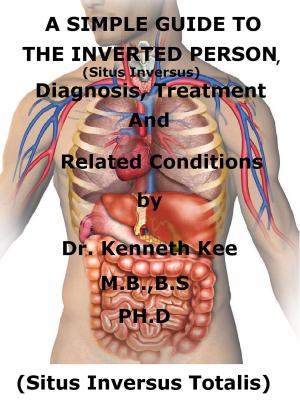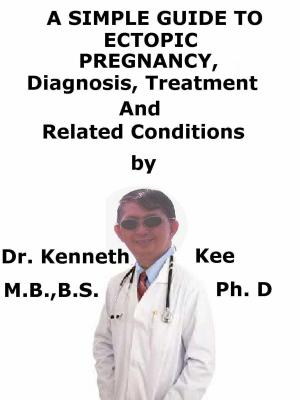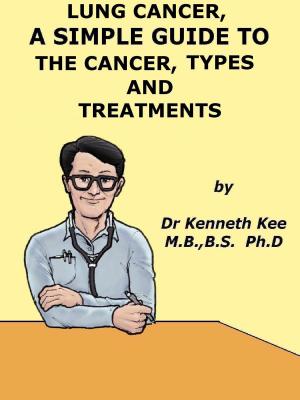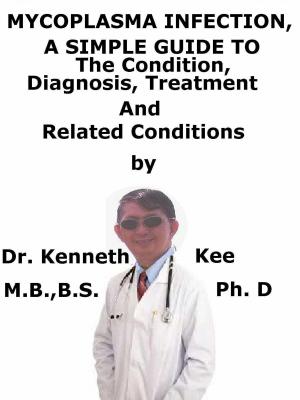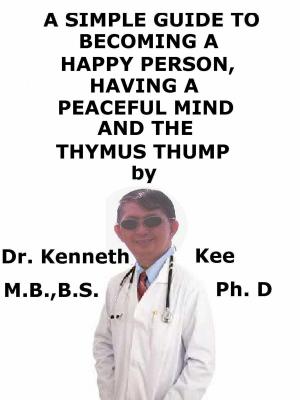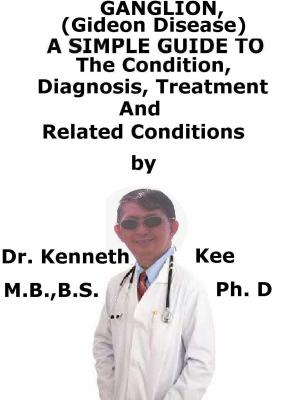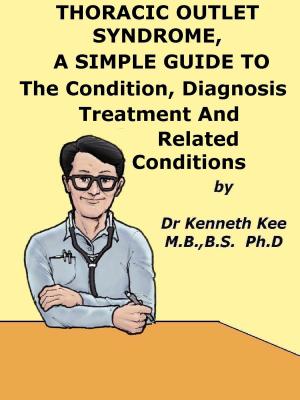Myocarditis, (Inflamed Heart Muscles) A Simple Guide To The Condition, Diagnosis, Treatment And Related Conditions
Nonfiction, Health & Well Being, Medical, Specialties, Internal Medicine, Cardiology, Health, Ailments & Diseases, Heart| Author: | Kenneth Kee | ISBN: | 9781370102334 |
| Publisher: | Kenneth Kee | Publication: | October 12, 2017 |
| Imprint: | Smashwords Edition | Language: | English |
| Author: | Kenneth Kee |
| ISBN: | 9781370102334 |
| Publisher: | Kenneth Kee |
| Publication: | October 12, 2017 |
| Imprint: | Smashwords Edition |
| Language: | English |
Recently there have been several cases of young persons such as national service men or young runners who suddenly collapsed and died of a heart attack.
Very often these people had a viral infection (e.g., influenza) a few days or 1 week before they started on their strenuous physical activity.
A viral infection can often cause inflammation of the heart muscles a condition called myocarditis which can lead to sudden heart attack and death.
It is very important to get sufficient rest after a viral infection such as influenza before starting on any strenuous physical exercise.
Myocarditis is acute or chronic inflammation of the heart muscle due to reaction of living tissue to injury or infection.
The inflammation may affect parts of the heart muscle or the whole heart
It may present similarly to myocardial infarction.
Myocardial destruction may lead to dilated cardiomyopathy
Causes
1.Infection:
Most of the time, it is caused by an infection that reaches the heart
The chemicals made by these disease fighting cells can also damage the heart muscle.
Consequently, the heart can become thick, swollen, and weak.
Many cases are caused by a virus that reaches the heart.
2.Immune-mediated diseases (body defending system attacks the body’s healthy tissues):
Autoimmune disorders that cause inflammation throughout the body such as:
Sarcoidosis.
Systemic lupus erythematosus.
Scleroderma
3.Drugs causing hypersensitivity reactions
4.Heavy metal poisoning: lead, copper, iron
5.Physical agents: Electric shock, Hyperpyrexia, Radiation or radiotherapy
In developed countries, the most frequent causes are hypersensitivity or allergic reactions
Symptoms
There may be no symptoms.
Symptoms may be similar to the flu
ECG abnormalities
Heart failure
Left ventricular dysfunction (LVD)
Fatigue
Chest pain
Fever and other signs of infection
Joint or leg swelling
Dyspnea
Palpitations
Fainting
Sudden Death
Diagnosis:
Myocarditis can be hard to diagnose because the signs and symptoms often imitate those of other heart and lung diseases
The doctor may hear a very fast heartbeat or unusual heart sounds
A chest x-ray can reveal swelling or enlargement of the heart.
If the doctor suspects myocarditis based on the examination and chest x-ray, an electrocardiogram may also be done to help make the diagnosis.
Other tests that may be needed are:
1. Blood cultures to check for infection
2. Blood tests to look for antibodies against viruses or the heart muscle itself
3. Blood tests to check liver and kidney function
Investigations
ECG: changes may include ST-segment elevation/depression, T-wave inversion, atrial arrhythmias, transient atrioventricular (AV) block.
CXR: Normal cardiac silhouette but pericarditis or overt clinical congestive heart failure is linked with cardiomegaly.
Vascular redistribution.
Interstitial and alveolar edema.
Pleural effusion.
Heart biopsy (the most accurate way to confirm the diagnosis)
Cardiac CT scan and MRI
Echocardiography
Cardiac catherization
Treatment:
Treatment of myocarditis is dependent on the severity and the underlying cause.
For most patients, no treatment is needed except for a few days of adequate rest if the symptoms are mild.
Patients with signs of acute myocarditis (fever, WCC, flu-like illness and hemodynamic compromise) should be transferred to ICU, as ventricular support and oxygen support may become necessary.
Patients may heal or continue to intractable heart failure
Steroids have been shown to improve survival in giant cell myocarditis
Parenteral inotropes (e.g., milrinone) or adrenergic agonists
Anticoagulant
Rest after recovery from acute myocarditis
Artificial heart implants
Heart transplant may be needed
TABLE OF CONTENT
Introduction
Chapter 1 Myocarditis
Chapter 2 Causes
Chapter 3 Symptoms
Chapter 4 Diagnosis
Chapter 5 Treatment
Chapter 6 Prognosis
Chapter 7 Coronary Heart Disease
Chapter 8 Chest Pain
Epilogue
Recently there have been several cases of young persons such as national service men or young runners who suddenly collapsed and died of a heart attack.
Very often these people had a viral infection (e.g., influenza) a few days or 1 week before they started on their strenuous physical activity.
A viral infection can often cause inflammation of the heart muscles a condition called myocarditis which can lead to sudden heart attack and death.
It is very important to get sufficient rest after a viral infection such as influenza before starting on any strenuous physical exercise.
Myocarditis is acute or chronic inflammation of the heart muscle due to reaction of living tissue to injury or infection.
The inflammation may affect parts of the heart muscle or the whole heart
It may present similarly to myocardial infarction.
Myocardial destruction may lead to dilated cardiomyopathy
Causes
1.Infection:
Most of the time, it is caused by an infection that reaches the heart
The chemicals made by these disease fighting cells can also damage the heart muscle.
Consequently, the heart can become thick, swollen, and weak.
Many cases are caused by a virus that reaches the heart.
2.Immune-mediated diseases (body defending system attacks the body’s healthy tissues):
Autoimmune disorders that cause inflammation throughout the body such as:
Sarcoidosis.
Systemic lupus erythematosus.
Scleroderma
3.Drugs causing hypersensitivity reactions
4.Heavy metal poisoning: lead, copper, iron
5.Physical agents: Electric shock, Hyperpyrexia, Radiation or radiotherapy
In developed countries, the most frequent causes are hypersensitivity or allergic reactions
Symptoms
There may be no symptoms.
Symptoms may be similar to the flu
ECG abnormalities
Heart failure
Left ventricular dysfunction (LVD)
Fatigue
Chest pain
Fever and other signs of infection
Joint or leg swelling
Dyspnea
Palpitations
Fainting
Sudden Death
Diagnosis:
Myocarditis can be hard to diagnose because the signs and symptoms often imitate those of other heart and lung diseases
The doctor may hear a very fast heartbeat or unusual heart sounds
A chest x-ray can reveal swelling or enlargement of the heart.
If the doctor suspects myocarditis based on the examination and chest x-ray, an electrocardiogram may also be done to help make the diagnosis.
Other tests that may be needed are:
1. Blood cultures to check for infection
2. Blood tests to look for antibodies against viruses or the heart muscle itself
3. Blood tests to check liver and kidney function
Investigations
ECG: changes may include ST-segment elevation/depression, T-wave inversion, atrial arrhythmias, transient atrioventricular (AV) block.
CXR: Normal cardiac silhouette but pericarditis or overt clinical congestive heart failure is linked with cardiomegaly.
Vascular redistribution.
Interstitial and alveolar edema.
Pleural effusion.
Heart biopsy (the most accurate way to confirm the diagnosis)
Cardiac CT scan and MRI
Echocardiography
Cardiac catherization
Treatment:
Treatment of myocarditis is dependent on the severity and the underlying cause.
For most patients, no treatment is needed except for a few days of adequate rest if the symptoms are mild.
Patients with signs of acute myocarditis (fever, WCC, flu-like illness and hemodynamic compromise) should be transferred to ICU, as ventricular support and oxygen support may become necessary.
Patients may heal or continue to intractable heart failure
Steroids have been shown to improve survival in giant cell myocarditis
Parenteral inotropes (e.g., milrinone) or adrenergic agonists
Anticoagulant
Rest after recovery from acute myocarditis
Artificial heart implants
Heart transplant may be needed
TABLE OF CONTENT
Introduction
Chapter 1 Myocarditis
Chapter 2 Causes
Chapter 3 Symptoms
Chapter 4 Diagnosis
Chapter 5 Treatment
Chapter 6 Prognosis
Chapter 7 Coronary Heart Disease
Chapter 8 Chest Pain
Epilogue
